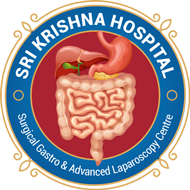What is Anal Fissure?
An anal fissure is a small tear in the thin, moist tissue (mucosa) that lines the anus. An anal fissure may occur when you pass hard or large stools during a bowel movement. Anal fissures typically cause pain and bleeding with bowel movements
Why Anal Fissures occur ?
Common causes of anal fissure include:
- Passing large or hard stools
- Constipation and straining during bowel movements
- Chronic diarrhea
- Anal intercourse
- Childbirth
Less common causes of anal fissures include:
- Crohn's disease or another inflammatory bowel disease
- Anal cancer
- HIV
- Tuberculosis
- Syphilis
Signs and symptoms of an anal fissure include:
- Pain, sometimes severe, during bowel movements
- Pain after bowel movements that can last up to several hoursr
- Bright red blood on the stool or toilet paper after a bowel movement
- A visible crack in the skin around the anus
- A small lump or skin tag on the skin near the anal fissure
How Anal Fissure Surgeryis done ?
A sphincterotomy is a surgical procedure used for treating chronic anal fissures. Anal fissure management includes surgical and nonsurgical treatment. When nonsurgical methods fail to provide any relief, physicians prefer surgical methods to treat anal fissures.
Surgical methods used for treating anal fissures are as follows:
- Lateral internal sphincterotomy
- Fissurectomy
- V-Y advancement flap
- A lateral internal sphincterotomy is the most preferred choice for surgical treatment of anal fissures. More than 90% of patients heal after a lateral internal sphincterotomy.
- A sphincterotomy is generally performed under local anesthesia. The surgery is in two ways. In an open sphincterotomy, in which a small cut in the skin to reach the sphincter muscle. Once the sphincter muscle is visible, the surgeon cuts into it. In this method, the incision may be left open to heal. In a closed sphincterotomy, a blade is passed under the skin to access the sphincter muscle.
Post operative recovery
- Pain is likely for 24-48 hours. Taking Tylenol (acetaminophen) can ease the pain in patients.
- Bleeding may be observed in patients for the first few weeks post the surgery.
- Constipation may be observed in patients for a few days; however, they should avoid straining while defecating.
- Patients should not lift anything heavy for 24-48 hours.
- Most patients can resume work and normal routine one to two weeks after the surgery.
- Patients should check out for the following symptoms:
- Fever
- Chills
- Blood in stools
- Inability to pass urine
- Pus discharge from the rectum
- Persistent pain
- Dizziness and fainting
- Blood clots
Advantages of Anal Fissure Surgeries
98% of patients presenting with a chronic anal fissure were successfully cured medically, avoiding the potential risk of permanent sphincter damage associated with surgery. In only very few patients did a combination medical treatment fail to heal the fissure and they required sphincterotomy.





